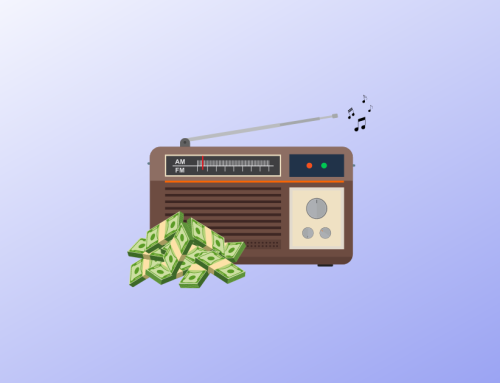Crowdfunding has emerged as a revolutionary for artists and record labels alike. It’s not just about raising funds; it’s about building a community around your music, engaging with fans, and bringing ambitious projects to life. Whether you’re an indie artist or part of a record label, understanding the ins and outs of crowdfunding music projects can set you apart in a crowded market.
For record labels, this approach isn’t just innovative; it’s essential. In a world where digital platforms have transformed how music is consumed and discovered, crowdfunding offers a unique way to gauge interest, foster artist-fan connections, and finance projects without the traditional financial risks. Let’s peep into why crowdfunding could be your next big move in the music industry.
The Benefits of Crowdfunding Music Projects
Crowdfunding music projects isn’t just a trend; it’s reshaping how music gets produced and launched. As a record label owner, understanding the multifaceted benefits can empower your approach to artist development and project launches. Here’s why:
Increased Exposure
Crowdfunding campaigns are a brilliant way to boost project visibility before release. Creating a compelling campaign means asking for financial support and inviting fans to join the journey. This interaction fosters a community feel around your artist or band, which is invaluable for word-of-mouth promotion. Here’s how it works:
- Social Sharing: Crowdfunding platforms are designed to be shared across social media. Each share expands your reach, bringing more potential backers and fans into the fold.
- Media Attention: Successful or unique crowdfunding campaigns often attract media attention, increasing exposure.
- Platform Algorithms: Most crowdfunding platforms have algorithms that highlight popular or fast-growing campaigns, giving projects additional visibility.
Upfront Revenue
One of the primary advantages of crowdfunding is the ability to generate revenue before the project is even completed. This upfront cash flow can cover production, marketing, and distribution costs, significantly reducing financial risk. Depending on how you structure your campaign, there are several methods to maximize this benefit:
- Tiered Rewards: Offer a variety of rewards at different price points to cater to a broad audience. High-tier rewards can include exclusive experiences, while lower tiers can offer digital downloads.
- Limited Editions: Special editions of the music or merchandise can entice higher contributions.
- Early Access: Providing backers with early access to the music or exclusive updates can be a compelling reason to support the project.
Direct Feedback from Fans
Crowdfunding offers a unique opportunity to gauge fan interest and receive direct feedback during the development process. This interaction can influence project decisions and adjust strategies based on real insights. Here’s why it matters:
- Engagement: Fans love feeling heard. You strengthen their connection to the artist and label by engaging with backers and considering their feedback.
- Market Testing: Use the crowdfunding campaign to test different aspects of the project, from song selections to merchandise designs. This can inform your broader market strategy.
- Community Building: Beyond the financial aspect, crowdfunding cultivates a community of dedicated fans. This can be an invaluable asset for future releases.
By leveraging crowdfunding, you’re not just raising funds; you’re building a groundswell of support and engagement that can set the stage for a successful launch. With strategic planning and active management, crowdfunding can open up new avenues for project funding, marketing, and fan interaction.
Steps to Launch a Successful Crowdfunding Campaign
The key to success lies in a well-strategized approach that engages potential backers and turns them into actual supporters. Below, we explore the essential steps to kickstart a successful crowdfunding campaign.
Setting Clear Goals
First, you need to set clear, attainable goals for your crowdfunding campaign. This isn’t just about the money you want to raise; it’s also about what you intend to achieve. Whether producing an album, launching a tour, or creating music videos, your goals should be specific, measurable, achievable, relevant, and time-bound (SMART). This clarity helps you craft a focused campaign and makes it easier for potential backers to understand what they’re supporting.
Break down your financial target into smaller milestones to keep your audience engaged and motivated throughout the campaign.
Building a Strong Online Presence
In 2024, a solid online presence is non-negotiable. Before launching your crowdfunding campaign, ensure your label and the artists involved have active profiles on social media platforms like Instagram, Twitter, and Facebook. A well-designed website can also serve as the central hub for your campaign, offering detailed information, updates, and a direct link to the crowdfunding page.
Leverage social media to:
- Share compelling content related to the campaign
- Highlight the artists’ journey and backstories
- Showcase snippets of the work in progress
Remember, consistency is key. Regular updates keep your audience engaged and remind them of the ongoing campaign.
Engaging with Your Audience
Engagement is the cornerstone of a successful crowdfunding campaign. It’s not just about broadcasting your needs; it’s about building a community around your project. Engage with your audience by:
- Hosting Q&A sessions on social media platforms
- Sharing behind-the-scenes content
- Organizing live listening sessions or performances
Encourage your artists to interact directly with supporters. Personal stories, challenges overcome, and the creative process are great topics that can humanize the campaign and create deeper connections.
Don’t forget to express gratitude. Acknowledge every contribution, big or small, and keep your backers updated on the campaign’s progress. This not only fosters a sense of community but also motivates further support.
By focusing on clear goals, building a robust online presence, and actively engaging with your audience, you’re well on your way to launching a successful crowdfunding campaign. Remember, the combined impact of these steps can turn your vision into reality, engaging fans and opening new funding avenues for your music projects.
Choosing the Right Platform for Your Music Project
When you’re looking to kickstart your music project through crowdfunding, selecting the ideal platform could mean the difference between hitting your goal and falling short. With several options, finding one that aligns with your audience, music genre, and funding needs is crucial.
Understand Your Audience
Know where your fans hang out online. If your fan base is already active on a specific platform, it makes sense to launch your campaign there. Platforms like Kickstarter and Indiegogo have diverse audiences, making them suitable for various music projects. But, if your music caters to a niche market, consider using platforms like PledgeMusic, which specializes in music projects and has an audience more likely to support your genre.
Assess Platform Fees and Features
Every crowdfunding platform has its own set of fees and features. Some charge a fixed percentage of the funds you raise, while others might have payment processing fees.
- Kickstarter charges a 5% fee plus payment processing fees
- Indiegogo offers flexible funding at a 5% fee, with additional payment processing fees
Also, features like social media integration, update tools, and in-campaign analytics can significantly affect the success of your campaign. Look for platforms that offer robust tools to engage with supporters and provide valuable insights into your campaign’s performance.
Evaluate Funding Models
Platforms also differ in their funding models—some offer an “all or nothing” approach, while others allow you to keep whatever you raise. Think carefully about what model best suits your project. If you have a specific budget without which your project can’t proceed, an all-or-nothing model might motivate you and your backers to hit the goal. On the other hand, flexible funding ensures you keep the raised amount, regardless of whether you meet your goal, providing some level of security for your project.
Choosing the right crowdfunding platform for your music project isn’t a decision to be taken lightly. Research each potential platform thoroughly, considering your audience, the cost implications, and the type of funding model that best suits your project’s needs. By aligning these factors with your campaign goals, you’ll bolster your chances of crowdfunding success and move your music project forward.
Conclusion
Choosing the right crowdfunding platform is a must for bringing your music project to life. By carefully considering your audience and each platform’s unique features and fees, you’re setting the stage for a successful campaign. Whether you opt for a broad-reaching platform like Kickstarter or a more niche option like PledgeMusic, aligning your project with the right environment is recommended. Remember, your music deserves the spotlight, and with the right approach to crowdfunding, you’re one step closer to sharing your art with the world. Immerse, make informed choices, and go fund that project.



